Jinglin Yi
Transfer Learning for Retinal Vascular Disease Detection: A Pilot Study with Diabetic Retinopathy and Retinopathy of Prematurity
Jan 04, 2022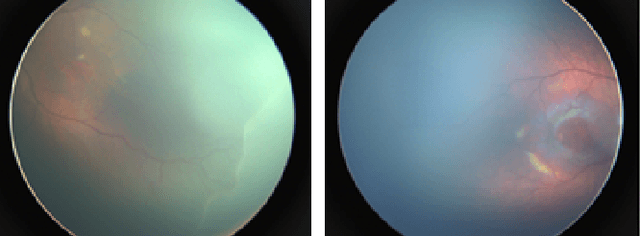

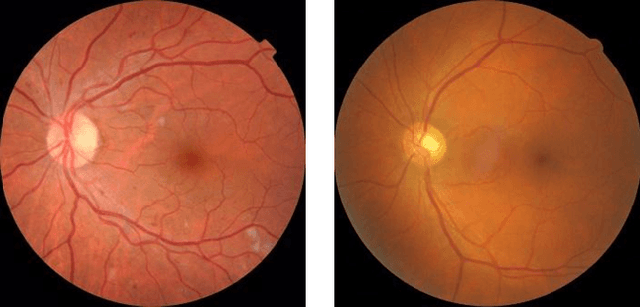

Abstract:Retinal vascular diseases affect the well-being of human body and sometimes provide vital signs of otherwise undetected bodily damage. Recently, deep learning techniques have been successfully applied for detection of diabetic retinopathy (DR). The main obstacle of applying deep learning techniques to detect most other retinal vascular diseases is the limited amount of data available. In this paper, we propose a transfer learning technique that aims to utilize the feature similarities for detecting retinal vascular diseases. We choose the well-studied DR detection as a source task and identify the early detection of retinopathy of prematurity (ROP) as the target task. Our experimental results demonstrate that our DR-pretrained approach dominates in all metrics the conventional ImageNet-pretrained transfer learning approach, currently adopted in medical image analysis. Moreover, our approach is more robust with respect to the stochasticity in the training process and with respect to reduced training samples. This study suggests the potential of our proposed transfer learning approach for a broad range of retinal vascular diseases or pathologies, where data is limited.
Early Detection of Retinopathy of Prematurity in Retinal Fundus Images Via Convolutional Neural Networks
Jun 12, 2020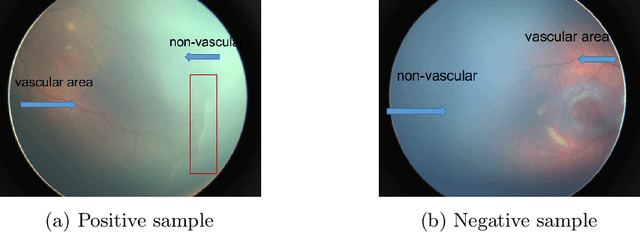
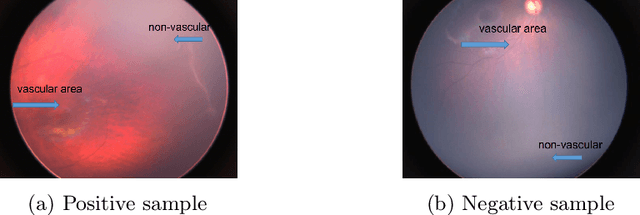
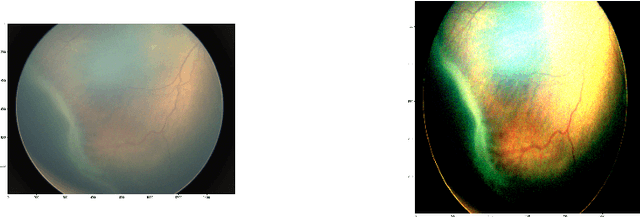
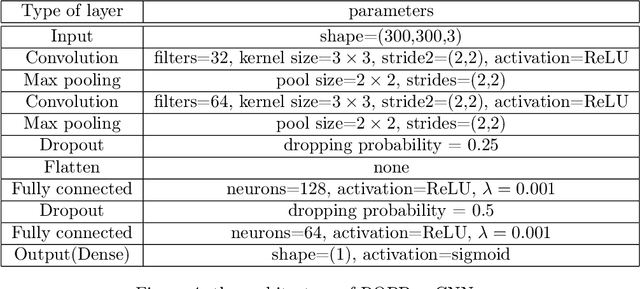
Abstract:Retinopathy of prematurity (ROP) is an abnormal blood vessel development in the retina of a prematurely-born infant or an infant with low birth weight. ROP is one of the leading causes for infant blindness globally. Early detection of ROP is critical to slow down and avert the progression to vision impairment caused by ROP. Yet there is limited awareness of ROP even among medical professionals. Consequently, dataset for ROP is limited if ever available, and is in general extremely imbalanced in terms of the ratio between negative images and positive ones. In this study, we formulate the problem of detecting ROP in retinal fundus images in an optimization framework, and apply state-of-art convolutional neural network techniques to solve this problem. Experimental results based on our models achieve 100 percent sensitivity, 96 percent specificity, 98 percent accuracy, and 96 percent precision. In addition, our study shows that as the network gets deeper, more significant features can be extracted for better understanding of ROP.
 Add to Chrome
Add to Chrome Add to Firefox
Add to Firefox Add to Edge
Add to Edge